The Philodendron McColley’s Finale is a rare houseplant known for its beautiful colors on new leaves that harden into large green shiny leaves. This is a vibrant plant that is ideal for adding color and vibrancy to your home or garden. It truly needs little maintenance, much as other Philodendron plants.
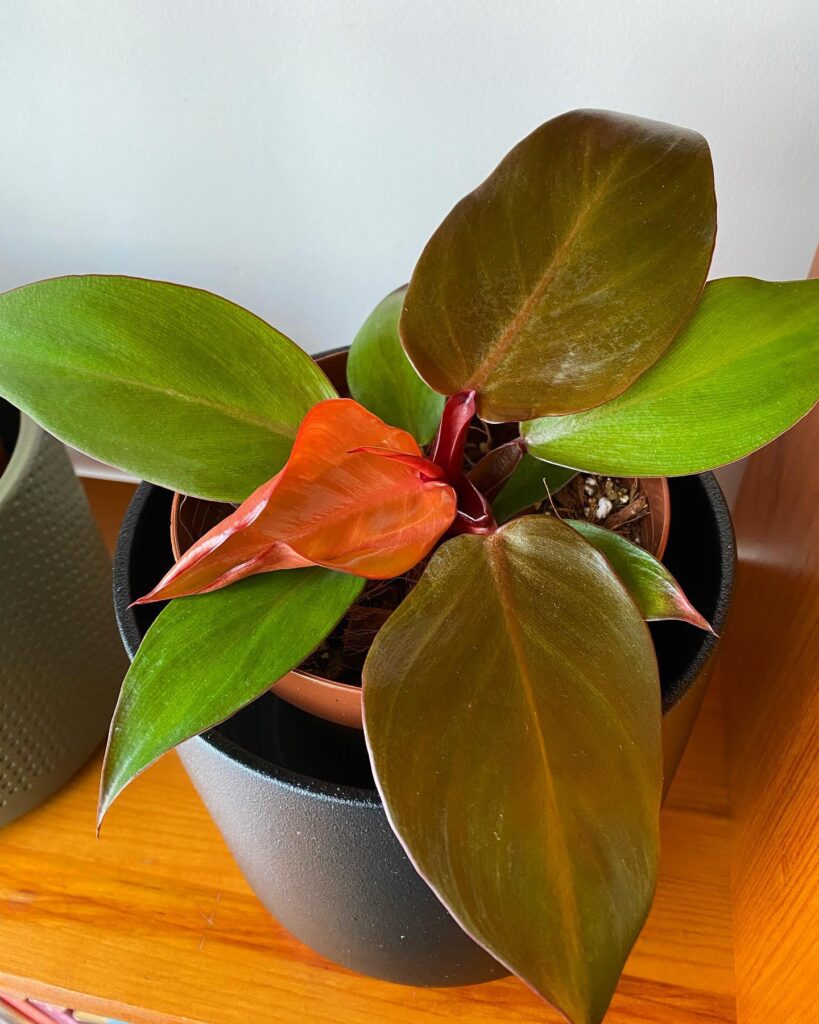
Any collector must own this extremely valuable and gorgeous houseplant!
Do you want to learn more about these gorgeous tropical plants? We’ll go through how to care for this plant the best below.
Profile Of Philodendron McColley’s Finale
General Information
The Philodendron McColley’s Finale is an evergreen tropical hybrid cultivar that is indigenous to Orlando, Florida, and tropical regions of South America. Philodendron Mccolley, sometimes known as Mccolley’s Hybrid finale, is an aroid Philodendron with a bushy, compact habit. It is cultivated for its glossy, big leaves that emerge reddish orange that is vivid.
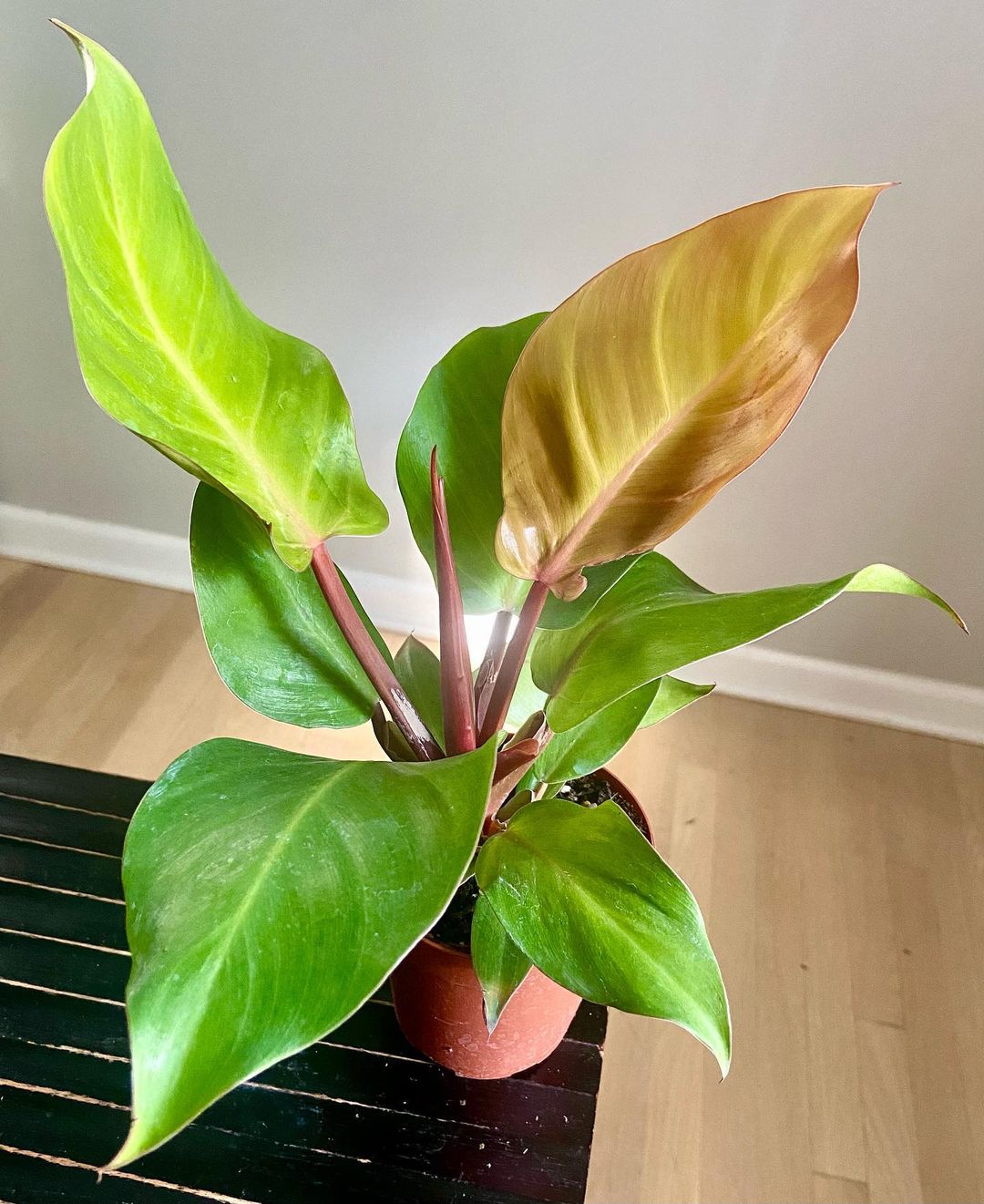
Well known for both its beautiful leaves and for being a tough indoor plant that may grow into a houseplant or terrarium plant. It has beautiful leaf colors that span from orange to red and green. However, the color of the leaves varies as the plant ages, from brilliant to burgundy and dark, deep green.
The Philodendron McColley’s Finale size averages 1.5 to 2 feet tall and can reach 3 feet tall.
RELATED: 18 Easy Common Houseplants You Must Have In You Home
Etymology
Philodendron McColley’s Finale got its botanical name from Robert H. McColley of Apopka, Florida, who was hybridizing plants at Florida State University when he came upon this deep red, chestnut-colored Philodendron.
What distinguishes them from other Philodendrons is that the young leaves emerge a rich, glossy red hue before maturing to a deeper red or green. These are very eye-catching, no matter where they are in your home.
Flowering
McColley’s Finale Philodendron rarely bears seeds. If they ever bloom, they are a vivid red hue in mid-summer. The majority of the growth of the plant arrived in May through July, during the flowering season.
Season Of Interest And Purchasing
The McColley’s Finale Philodendron has strong foliage, and since it draws attention to your house, many people like the velvety feel of the foliage. This stunning plant will do the trick if you’re seeking a vibrant plant for indoor décor or to create terrariums or vivariums.
RELATED: 11 Outdoor Foliage Plants To Arrange Your Garden Like A Professional Landscape Designer
Additionally, it thrives in patios with clusters of other plants and in pots. Garden stores, Etsy, and Amazon all have Philodendron McColley’s Finale at reasonable prices. For as long as this plant is around, your surroundings will constantly be covered in greenery. They’ll surely increase the comfort of living in your house.
Growth
Philodendron McColley’s Finale is a fast-growing kind of plant that attains an average elevation of 1 to 3 feet with the same dispersion towards its sides.
Like many common indoor plants from this tropical tree-climbing family, the variation may grow a little higher and wider in an outdoor environment. The plant can entirely epiphyte and grow to greater heights in its natural environment if it gets loose to the ground.
| Philodendron Prince of Orange Overview | |
| Scientific name | Philodendron ‘McColley’s Finale’ |
| Common name/s | Philodendron McColley’s Finale, McColley’s Hybrid Finale |
| Family | Araceae |
| Growth Habit | Herbaceous, Epiphytic Vine |
| Height and Spread | up to 3 feet in height, and three to six feet in spread |
| Classification based on life cycle | Perennial |
| Origin and Distribution | Native to South America |
| Climate Zone | Generally mild climate |
| USDA Plant Hardiness Zone | USDA Zone 9-11 |
| Color | Long, large leaves that range in color hues from bright orange to red |
Care Tips For Philodendron McColley’s Finale
Light Requirements
The McColley’s Finale Philodendron species, like many others, benefit from bright indirect sunlight. Because in this kind of light, their leaves take on a vibrant colors of green and orange and seem more luxuriant. However, too much direct sunlight could scorch the vegetation. So, additionally, they can tolerate a little less light than houseplants.
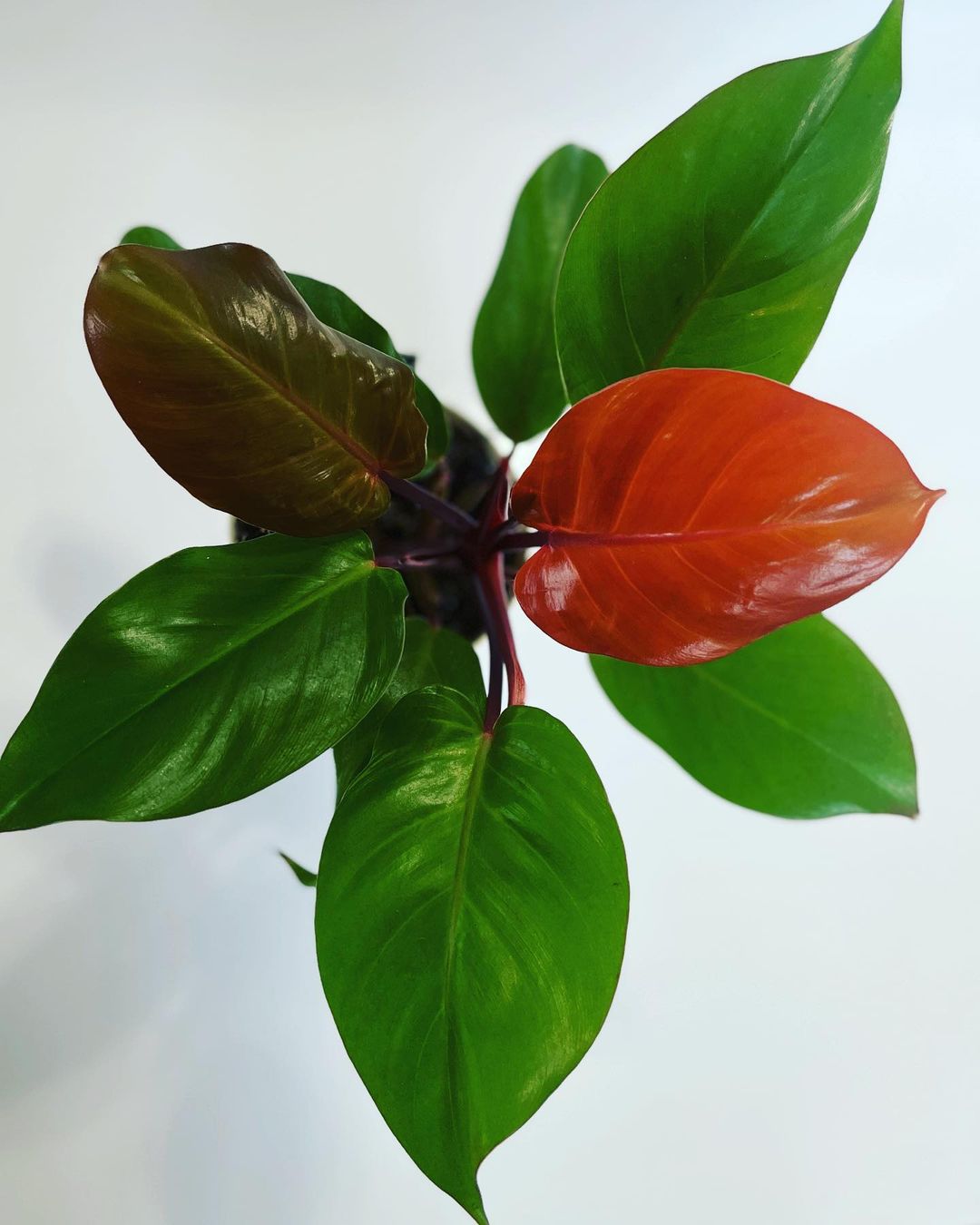
Your Philodendron might benefit from some assistance over the cold months. You can use grow lights, particularly if your plant is located in a dimly lit room at home or in a workplace where light is in short supply. Make sure your plant receives the proper quantity of strong indirect light; it will help it develop even better.
It is a sign that your Philodendron plant is not getting enough light if it begins to grow lanky, lengthy leaves and leaves with wide spaces between the internodes. So once more, prolonged exposure to direct sunlight is definitely not recommended if you don’t want crunchy leaves!
Temperature Requirement
Philodendron McColley’s Finale is a tropical plant. As a result, they like mild to warm weather. As long as they do not get too chilly, they will do well in most houses. Aim for a temperature range of 18°C to 25°C (64-77°F). During the night or in the winter, try to maintain them above 10°C (50°F) and avoid freezing temperatures.
If you are experiencing extremely cold temperatures, it is best to keep your plant indoors.
Keep plants away from exterior doors that open and close frequently to prevent temperature fluctuations. The plant will suffer if there are frequent temperature changes, and its leaves won’t be strong. Since misting aids in moisture retention and lowers temperature fluctuations, it might be a solution.
Water Requirement
Philodendron McColley’s Finale should be watered often and in sufficient quantities because it prefers the soil to dry up between waterings. Although it can tolerate drought, it suffers when overwatered, which can cause the plant to decay.
If there is too much water, the leaves will begin to turn yellow. Choosing a planter with several drainage holes and providing frequent watering to Philodendron McColley’s Finale are effective strategies to keep them healthy.
Depending on your interior air quality, climate, and moisture level, adjust your watering plan for your McColley’s Finale to roughly twice a week in order to prevent this. For this plant, tap water is acceptable.
Humidity Requirement
All indoor plants require a particular level of humidity to grow. Philodendron McColley’s Finale benefits from high humidity. For best results, humidity should be kept at 60% or above. It will, however, survive as long as the humidity is at 40%.
It makes the environment more humid, which is ideal for growing various sorts of houseplants. Misting is an effective approach to restore correct humidity levels.
Soil Requirement
Any potting mix with adequate drainage works well with the Philodendron McColley’s finale plant. The Philodendron McColley’s Finale soil is best mixed with perlite, sphagnum moss, sand, coconut coir, or bark to give it room to flourish. They thrive in potting soils that drain quickly and are high in organic matter. This allows excess moisture to drain and keeps the pot from becoming saturated, but still keeping the soil moist.
Avoid making it overly bright, since this might cause the plant to dry out too quickly and not absorb nutrients. A soil pH in the range of 6.1 to 7.5 is ideal; otherwise, the plant’s vitality would suffer. It denotes that the soil’s pH should be between acidic and neutral.
Fertilizer Requirement
Philodendron Mccolley’s Finale will require fertilizer during the growing season to offer the nourishment it demands. However, it grows well and produces healthy leaves when fertilized on a regular basis.
Therefore, throughout the growth season, apply a mild rapid fix of a balanced nutrition solution every two weeks or a slow release fertilizer. Do not fertilize during the cold season.
Space Requirement
To guarantee the best development, place your Philodendron mccolley’s finale in an east-facing site with direct, warm morning light for a few hours each day. If your plant is next to a window with a south or west exposure, move it at least 2-4 feet away.It is done to protect the plant from direct sunlight.
Rotate the plant every few weeks to ensure balanced growth and prevent leggy stems. If you wish to grow your Philodendron outside, a patio or shaded setting might be ideal.
Growing And Planting Tips Of Philodendron McColley’s Finale
Propagation
Stem cuttings are the most practical way for propagating Philodendron McColley’s finale at home. It is noted for roots quickly in water or potting soil and has a high success rate. Furthermore, root formation is stimulated when the stem is coated with damp moss. Finally, by separating the roots from the stems and leaves, a new plant is created.

Propagation By Stem Cuttings
Philodendron Mccolley’s finale’s stem cutting is an effective asexual propagation strategy. It successfully manipulates a portion of a parent plant’s stem to form a new plant. Simply follow the methods mentioned here to grow Philodendron mccolley’s finale.
● Choose a stem part with a few leaf nodes and a few healthy leaves for the finale of your Philodendron mccolley. Leave one or two leaves on a 4- to 5-inch stem cutting.
● Prepare a planter or miniature pots with soilless potting medium, such as seed-starter mix or vermiculite, then place the prepared seed beginning media on top of the clipped stem.
● Fill your planter with slightly moistened potting soil or coconut coir and then place the cuttings in an area that will offer them with a 50/50 ratio of shadow to dappled sunshine. Instead of allowing it to grow soggy, water it on a regular basis for two weeks.
● When the cutting’s stem begins to sprout new leaves, it typically indicates the development of healthy, new roots. Transplant the cutting to a new container with fresh potting soil after the roots have grown sufficiently.
Growth Timeline
We often offer an expected growth timeframe to assist you with the propagation information, but the time restriction may change depending on factors like soil, temperature, and light. Therefore, it is always preferable to monitor how the plant is progressing and fulfill the criteria properly.
Day 1 to Day 30: During the first few days, simply maintain a reasonably even moisture level in the soil. You won’t have to worry about watering if the plant is propagated using water. However, you must replace the water once a week to keep it from growing mucky.
Typically, rooting begins after the third week.
Day 30 to Day 60: Shoot development may start following the conclusion of an additional 45 to 50 days. To allow the tiny plant to grow, keep moisturizing the soil or changing the water as directed.
Day 60 and Up: At this point, a well-cared-for infant plant will flourish quickly. Simply adhere to the concluding Care offered by Philodendron McColley above and take pleasure in this baby’s development.
Pruning
Since Philodendron McColley’s Finale grows quickly, you may need to trim it to maintain its form and size. Remove a few leaves around the base, ideally the older and sickly ones. This will assist you in maintaining the plant’s beauty and health.
To minimize nutrient consumption and accelerate the growth of new blooms and foliage, remove withered or diseased leaves and dead or rotten roots when repotting or changing soil.
Potting And Repotting
A good container for Philodendron McColley’s Finale is the one that drains effectively to keep the roots from rotting due to excess moisture. It thrives in any container; however, clay, ceramic, or terracotta pots may assist evacuate excess moisture and prevent waterlogging. Although this plant is prone to root-bound circumstances, try repotting it in the early spring every 1 to 2 years.
When repotting, make sure that the container has drainage holes, is two inches larger than the previous one, and contains high-quality, recently mixed potting soil.
| Philodendron McColley’s Finale Care | |
| Light | Bright indirect light |
| Temperature | Intermediate to warm, 64-77 degrees Fahrenheit |
| Water | Once a week, increased in summer, decreased in winter |
| Soil | Airy, well-draining soil; not too loose |
| Fertilization | Regular household fertilizer, once a month |
| Space | Plenty of space to spread |
| Propagation | Via water and soil propagation |
| Blooming | Rarely blooms, enough sunlight and maturity needed |
| Pruning | Regular pruning |
| Potting | Regular potting mix, use of horticultural charcoal, perlite and coco coir |
Problem And Troubleshooting Of Philodendron McColley’s Finale
Overwatering Of Philodendron McColley’s Finale
The Philodendron McColley’s Finale will grow stressed if it receives too much or too little water. This stress causes the foliage’s color to become yellow. The most frequent causes of problems with this plant are overwatering and root rot. Additionally, the leaves may appear to be drooping or curling. Finally, pests or a lack of nutrients can occasionally cause yellow leaves.
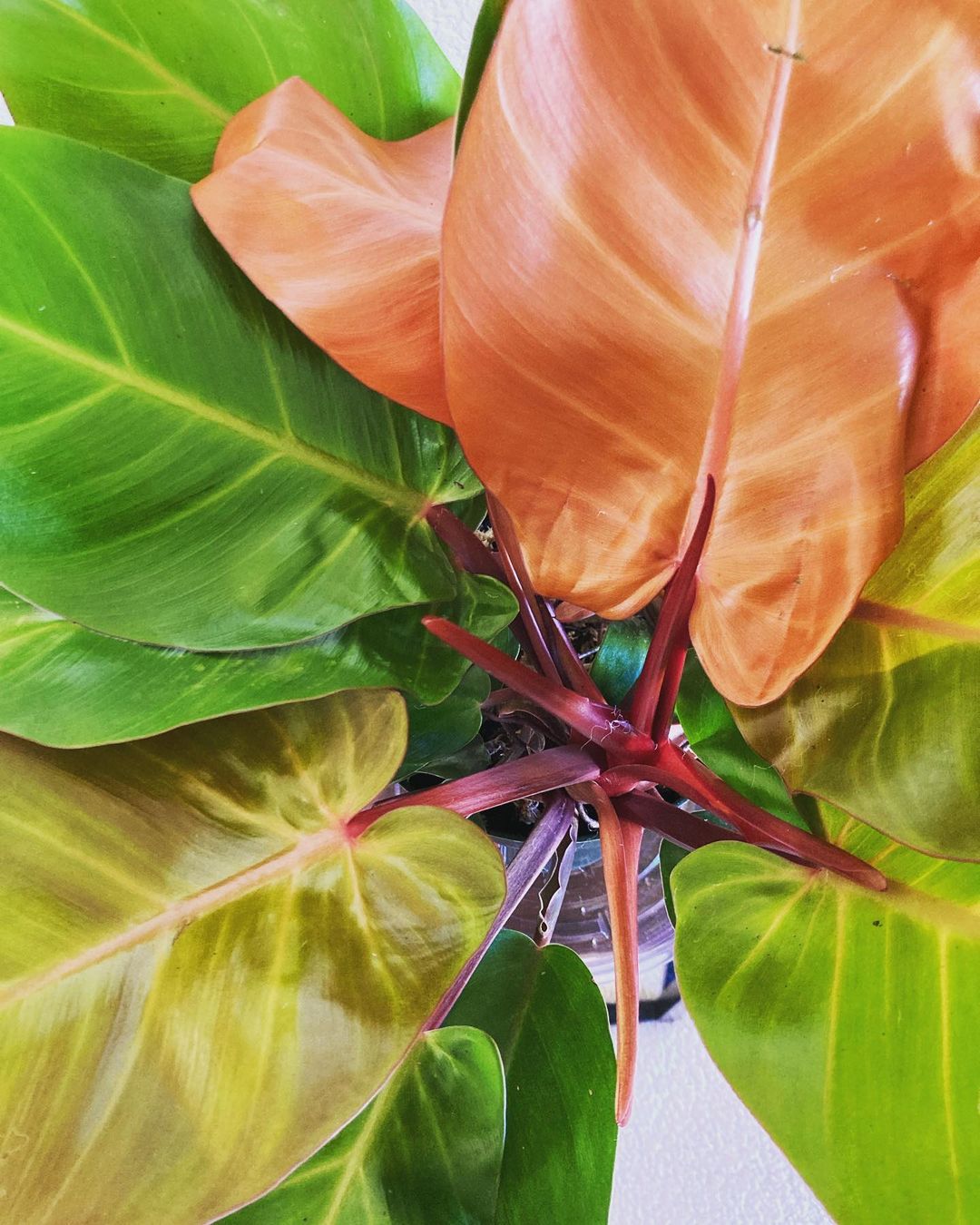
To avoid this, place the plant in a spot with indirect sunlight and water it anytime the soil dries to a depth of two inches.
If you ever have overwatering, try these tips:
- First, reduce watering so that the soil can dry out.
- Make holes in the pot to let the excess water out.
- Put the plant in a well-lit area.
- Before repotting into a new container, a fungicide should be administered.
Underwatering Of Philodendron McColley’s Finale
There might be a number of reasons for leaves that are mostly pale and discolored, drooping, wilting, and curling, severe water shortage, and intense sunshine.
If you water McColley’s Finale correctly and according to their watering schedule, they will recover. Sadly, it can be too late to salvage your plants if they are dehydrated for a prolonged period of time.
Nutrient Deficiency
Nutrient deficiency is evident by stunted development, browned leaves, paler patterns, and other symptoms. Feed your Philodendron McColley’s Finale to encourage root growth and thicker leaves to prevent this issue. This houseplant doesn’t require a lot of fertilizer, though, provided you have a high-quality organic potting mix.
To avoid this, apply the right, balanced fertilizer to correct this; calcium-rich fertilizer is what you want. It’s important to check the fertilizers’ potency as well because too much of it might injure plants and cause your Philodendron McColley’s Finale to grow slowly or with stunted development.
Flowering Problems
Unfortunately, this is a species that does not easily or regularly blossom when we talk about flowering inclination. Most plant collectors are not so eager about this flower since its blossoms are less attractive than its lovely foliage. Additionally, Philodendrons rarely bloom indoors.
However, this Philodendron can produce blooms when the right conditions are met if you want flowers. Keep the soil evenly moist and stop it from drying out completely. Ensure that the plant gets plenty of indirect, bright light.
Drooping And Yellowing
Yellowing or other leaf discoloration indicates that your plant receives too much direct sunshine. As a result, you can decide to relocate it to a new spot where it won’t receive as much direct light or where sheer curtains will shadow it.
Drooping can be caused by too much or not enough water. Adjust your watering plan accordingly, and always examine your soil before watering your Prince of Orange to remedy this.
Diseases
If a plant is not adequately cared for, it can get diseases. Notably Septoria Leaf Spot and Alternaria Leaf Spot, which cause fungus development, damage plants in this family. These are frequently brought on by overwatering the plants. Therefore, when you notice yellowing (Septoria) or brown spots, respond right away (Alternaria).
You can use a fungicide with a copper base to treat your plants, and for future prevention, pay close attention to how often you water them.
Pests
Unfortunately, Philodendron is not an exception to the rule regarding houseplants and pest issues.
In order to prevent additional infestation, it is best to remove the plant with the infestation and keep it away from the other plants in your collection. In addition, it is best to be proactive and isolate the affected plant because these pests enjoy moving from plant to plant.
Spraying neem oil on your plant is the next step, and it’s also the simplest and easiest. To prepare this spray:
- Combine two teaspoons of neem oil and one teaspoon of soap in a spray container.
- Fill the bottle with water, then shake it well.
- Spray the plant sparingly, making sure to get the undersides as well, and repeat the procedure every 5-7 days.
Natural pesticide neem oil makes it harder for these insects to breathe.
| Philodendron McColley’s Finale Pests and Diseases | ||
| Common Pests/Diseases | Symptoms | Treatment and Prevention |
Common diseases include crown rot, stem rot, root rot, leaf spot, fungal diseases, and Xanthomonas infection | Yellowish rimming around black or dark brown spots on leaves | Avoid overwatering. Keep soil dry. Avoid too high humidity.Proper ventilation is needed around the plant. Remove infected parts of fungal infections to avoid spreading |
| Common pests include mealybugs, spider mites, aphids, and scales | Visible insects on the surface | Spray plant with warm, soapy water. If infestation is present, use insecticide or neem oil. Use diatomaceous earth. |
Problems With People And Animals
Toxicity
The toxicity of this plant is typical of its genus. Calcium oxalate crystals are found throughout the plant. As a precaution, it is best to keep both young children and dogs away from it. Ingestion of the leaves or sap causes discomfort as well as digestive and gastrointestinal problems.
Philodendron Mccolley’s Finale Meaning And Symbolism
Philodendrons are considered to represent a love of nature, making them ideal for those who are passionate about plants and eco-friendly living. They also stand for personal development, so they are the perfect present for anyone going through a significant life change or trying to better themselves.
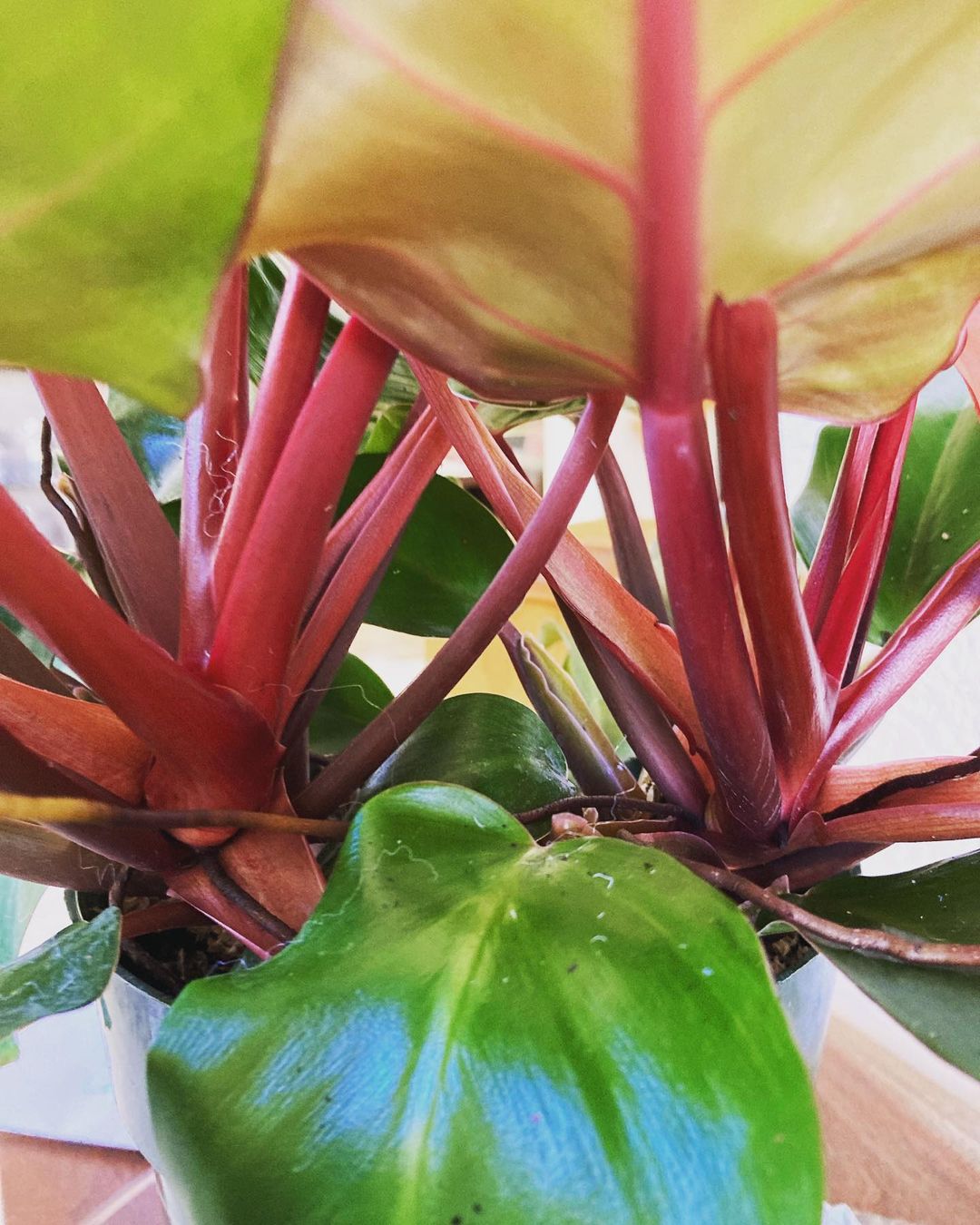
They are a wonderful gift for someone going through a major life transition or making changes in their own life because they stand for personal development.
| Philodendron McColley’s Finale Symbolism and Meaning | |
| General Meaning | love of nature, passion for eco-friendly living |
| Symbolism | Personal growth |
Landscaping And Gardening Ideas For Philodendron McColley’s Finale
Companion Plants Of Philodendron McColley’s Finale
Monstera deliciosa, Pothos, and other Philodendrons, as well as McColley’s Finale Philodendron, can be planted together to give your area an added boost of interest.

It is suitable for use as a ground cover, trailing plant, or interior climber. As a consequence, you will have several options for how to use it in your garden. They all require low-maintenance indoor gardening.
Furthermore, the Philodendron Prince of Orange can be a companion to the McColley’s Finale Philodendron. It has unusually colored leaves that change color over time. As a result, it provides contrast to McColley’s Finale Philodendron, making it more beautiful.
Landscaping Ideas For Philodendron McColley’s Finale
This philo hybrid is nothing short of stunning. Fresh leaves start out brilliant cinnamon-colored, then turn fiery red, and, ultimately deep lustrous green.
These plants may be artfully arranged on mantles or bookshelves to draw attention to your fireplace, or they can be placed on top of a shelf above essential pieces of furniture. Its luxuriant, tropical flora also conveys tranquility and peace.
| What to plant with | Other Aroids, Bird of Paradise, Areca Palms, Fire Spike, Heliconia, Variegated Arboricola, Croton, Chenille Plant, Pentas, Most Tropical Plants |
| What NOT to plant with | Basically nothing |
Conclusion
Philodendron Mccolley’s Finale is a tropical hybrid plant. The foliage undergoes a distinct metamorphosis during the growing phase. The cinnamon-to-orange infant leaves mature to a fiery red color before becoming a deep glossy green.
This has gorgeous multi-colored foliage that make it a showpiece. Philodendrons are among the most popular indoor plants due to their beautiful leaves and ease of upkeep.
This vibrant beauty is an excellent choice for indoor pots, terrariums, and vivariums. Furthermore, it performs well when combined with appropriate plants in patios in pleasantly warm zones, and it performs even better at absorbing carbon dioxide and other airborne pollutants. Porous oxygenating leaves both visually and aurally brighten and freshen the room.
In nature, this plant is poisonous. So, as a precaution, children and pets should avoid playing near this vibrant beauty, the Mccolley hybrid Philodendron Plant.
FAQS
Is Philodendron McColley’s Finale Toxic To Pets?
Pets should not be near this plant. Similar to other plants in the Araceae family, this plant has calcium oxalate crystals. These compounds are released when the plant is chewed, penetrating tissue and irritating the mouth and GI tract.
Any portion of the plant could cause symptoms in pets, including vomiting, appetite loss, and excessive drooling.
Is it possible to propagate McColley’s Finale via seeds?
Yes, technically. However, for this to happen, the plant must blossom, and plants grown in pots indoors rarely do so. Professional nursery growers use tissue culture as their propagating strategy.
How can I make my McColley’s Finale look bushier?
You can’t prune this particular variety of self-heading Philodendron. You can make it grow bushy by providing an excellent fertilizer that promotes leaves and enough bright light to support strong development.
What is the common name of Philodendron McColley’s Finale?
The Philodendron McColley’s Finale is already the common name of this Philodendron hybrid. However, it is also seldomly called Hybrid Finale.
- Is Philodendron McColley’s Finale an Anthurium?
Definitely not. Philodendrons are members of the genus Philodendrons and not of Anthuriums. However, they are closely related since they come from the family Araceae. The same family of Alocasias and Monsteras.
We hope you learned something from this article, here are other articles that you can learn from:
Monstera Laniata Vs. Adansonii: Top Differences Between The Two Monsteras
How To Grow & Care For Your Monstera Plant? The Ultimate Guide
Philodendron Erubescens: The Best Care, Propagation, and Watering Guide







